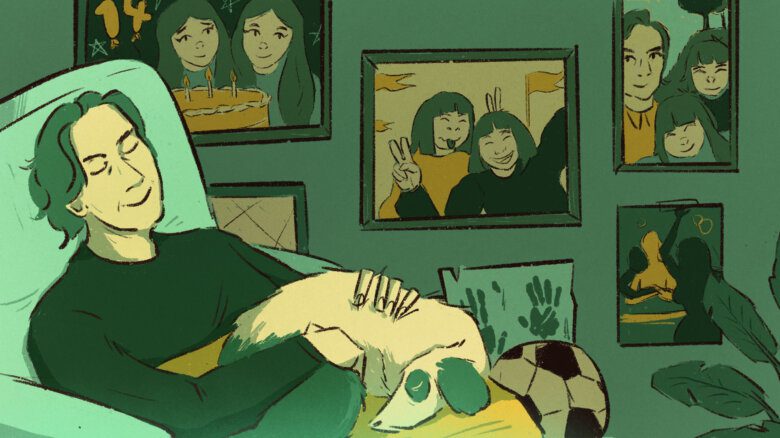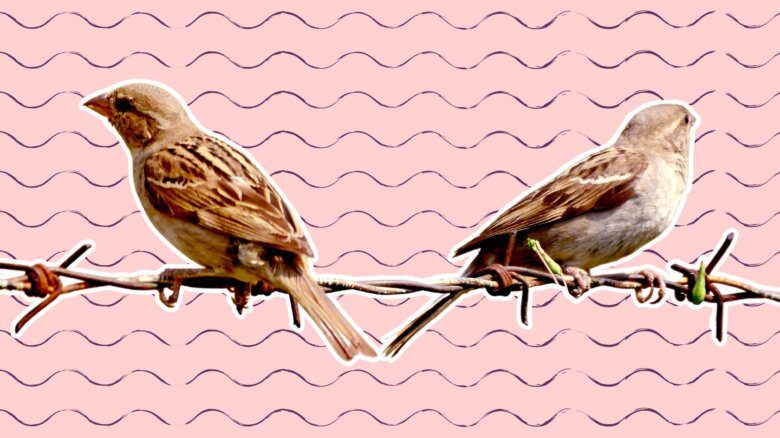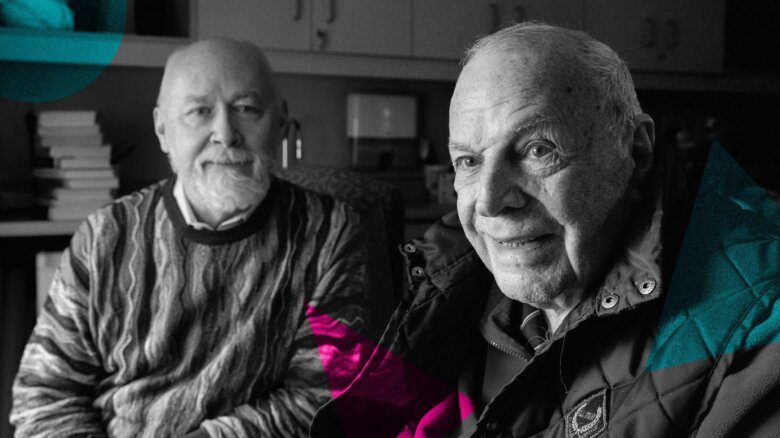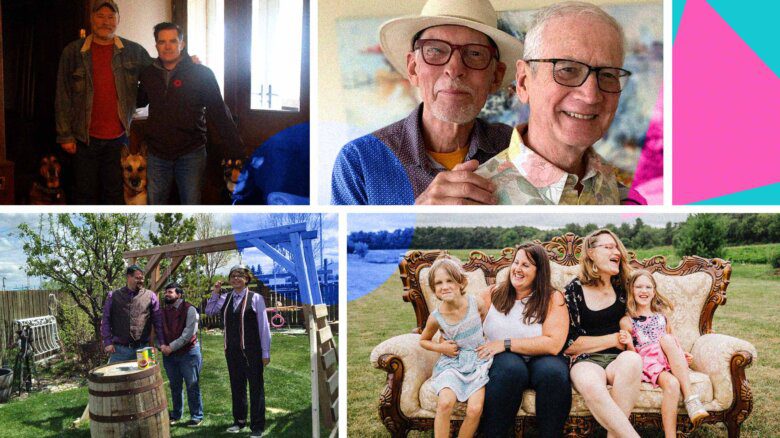Carl Hiehn was 21 when his first-ever serious relationship ended. It was 2009, and at the time of the breakup, his ex had recently finished a half-marathon race. With a broken heart and a surge of built-up emotions, Hiehn embraced the motto of “anything my ex can do, I can do better.” He started training right away, and he finished his own first half-marathon within six months. Hiehn hadn’t been much of a runner before, but getting outside and racing alongside other people turned running into something he actually enjoyed doing.
Now 36, Hiehn is helping other people cultivate a similar love for running. He’s the founder of the Queer East Run Crew in Toronto, a 200-person running group for LGBTQ2S+ people. Created during the COVID-19 pandemic in 2021, when feelings of loneliness and a lack of community were at their peak, Queer East Run Crew became a much-needed space for people craving human interaction. The group gets together once a week for a low-stakes meet-up where runners can choose from three different route options: one with a conversational pace, one with a faster pace and a third, longer route for those who are stronger distance runners.
“Some of our runners have done the Boston Marathon multiple times, but then we have people who are literally just starting out,” Hiehn says.
The club also functions as a social space where queer runners can meet—and sometimes culminates in drinks at a bar, giving participants time to debrief and cultivate new relationships with other members.
“A lot of people have latched on to it and they’ve seen the really positive aspects of it,” Hiehn says.
Hiehn has witnessed the impact of Queer East Run Crew Toronto since its inception, seeing how it has allowed people to embrace their queerness, share their love for movement and spend time with fellow runners.
Across Canada, several other LGBTQ2S+ running groups are offering their members the same thing.
The rise in queer running groups
There are many LGBTQ2S+ running clubs across Canada, some of which seek to centre trans and non-binary folks—like the Queer Run Club (QRC) in Toronto and Queer Van Run Club in Vancouver.
As dedicated spaces for queer people shut down during the pandemic and people needed more opportunities for community-building outside their homes, running emerged as an ideal outdoor activity—free, sociable and requiring little to no equipment.
The number of queer running groups today seems to be continuously growing.
The makeup of queer running groups says a lot about how the running industry is changing. Five out of the six World Marathon Majors, for example, now allow participants to register as non-binary. There’s also more emphasis on how to make these spaces more inclusive. Non-binary runner Jake Fedorowski, executive director of the Queer Running Society, created The Guide to Non-Binary Inclusion in Running, a resource that helps make the sport a more welcoming space for LGBTQ2S+ people.
There are many reasons why people may choose to join a running group: the sense of community it offers, the opportunities to meet other people it brings or the chance to enjoy sports in an inclusive space.
MK Kwan, 39, founder of QRC in Toronto, says that they sometimes don’t feel like running, and that’s all right too. They encourage people to do QRC’s weekly run at their own pace, even if that’s walking.
QRC “is not totally centric around running. Maybe that’s part of how people feel welcomed. We’re always doing something really silly together,” says Kwan.
Running groups are the new social hubs
For many members, queer running groups are as much a means to meet new people as they are a means to exercise.
Eric Wright, 37, says Toronto’s Queer East Run Crew gives members opportunities to meet people who share similar interests.
This year, Wright became part of the crew’s leadership where they get to lead warm-ups, go over weekly routes and welcome new members. As a non-binary person, they’re always intentionally welcoming people and making sure they feel seen.
Wright has been a member of the Queer East Run Crew since 2022. They say they love how running makes them feel, but also what the people joining the club have brought into their life.
“Running feels like freedom to me for so many reasons. I would also say that running is about building relations with people,” they say.
Wright began long-distance running in Grade 4 and participated in cross-country and track and field throughout high school. After a dance injury sidelined them from running in 2019, they made a comeback by joining the run crew.
“We were in the later stages of the pandemic, and people were starting to get out more and see each other. And [the Queer East Run Crew] was just in my neighbourhood, and it was queer and trans. It was like, ‘Oh, well, this checks all the boxes for me.’”
Wright says they’ve seen an increase of queer and trans run groups sprouting up in Toronto since the pandemic began.
They consider these groups as noticeably different than running groups meant for the general population. Wright has been part of many queer and trans sports leagues and appreciates the sense of safety and inclusion these spaces can bring. From the get-go, they recall how sharing pronouns was standard practice at Queer East Run Crew before each run, a crucial ritual that helps prevent misgendering and ensures that people feel welcomed and seen. Wright also noticed crew leaders made an effort to community-build.
“There’s a lot of intention about making sure that this is a safe space for people to be themselves,” they say. “Most of the members are gay men, but I feel I belong and am accepted and embraced as equal.”
Groups can be a safe haven for trans and non-binary runners
This safety is particularly meaningful to trans and non-binary people, who are often excluded from participating in organized sports. In Canada, only 11 percent of non-binary youth ages five to 19 participate in sports.
The 2023 annual report from RunSignup, an online race management tool, also revealed that only 0.2 percent of registered individuals identified as non-binary, compared to 44.7 percent cis male and 53.4 percent cis female. While this data is not indicative of the lack of nonconforming runners, it does highlight the lack of a registration option for people identifying outside the binary. Prior to 2022, individuals could only register as either male or female on RunSignup.
Organized sports leagues often feel overwhelmingly heteronormative, Wright says, which can be a turnoff for LGBTQ2S+ participants.
“You really lose interest, and you often feel like there isn’t a place for you in the sporting world because the sporting world can be so heteronormative and so hypermasculine,” they say.
Queer running groups help people previously excluded from sports due to gendered divisions to reclaim their presence.
Laurie, 30, a member of OUTrun Club who preferred not to disclose her last name to protect her identity, has been running since she was 15. When she joined OUTrun, a queer running group in Montreal, in 2023, it was her first experience with a running group.
“I never joined a running club before for various reasons, one of which is that I’m trans. Earlier in my transition, I was a little bit less secure with myself and more wary of people, especially non-LGBTQ2S+ people.”
Laurie says OUTrun has many gender-diverse members, which has given her an opportunity to bond with fellow runners.
She also appreciates that the group is open to working with members to improve. OUTrun held a community Zoom meeting in February where members provided feedback. Physical accessibility of the routes, and expanding the promotion of events to other queer sports leagues to increase visibility efforts were top priorities.
Running groups aren’t just for friendships
Queer running groups sometimes offer people what they can’t get out of dating apps, bars or clubs: more meaningful face-to-face encounters in a consistent and natural way. As such, some queer people have managed to find love while running.
Hiehn has gone on many dates with people from running groups. He considers these connections to be quite different than those in dating apps.
“I’ve been on Grindr for eight years and it’s never really worked out for me. Running has given me a lot more positive control. There’s no alcohol involved, like, no one showing up having [had] a drink or anything—you’re a little more level-headed, you’re clear,” he says.
This is why he feels that there’s something uniquely refreshing about showing up sober and starting a conversation with people he may not know—it’s less rigid and more casual.
“There’s been a rise in a sense of loneliness within the queer community of all expressions, and I think people are craving real connections,” says Hiehn. “If you are looking to create a real relationship with somebody that you’re not just going to swipe based on how they look in a photo, you need to meet in person—and running groups allow for that,” he says.
Katy Dmowski, 25, met their partner Evelyn Poole, 24, at OUTrun Club, the first queer event they attended after moving to Montreal in 2022. Dmowski and Poole, both co-leads of OUTrun, first met at a house party that September without knowing they would see each other again at OUTrun the next day. They’ve now been dating for a year and a half.
“It was a really special moment. OUTrun facilitated our relationship because we saw each other every week after that. It was like a point of contact,” says Poole. Running is something that consistently brings us together and something that we can share with our larger group of friends.”
Dmowski says they feel lucky to share an interest with Poole like running, and know many people at OUTrun who have also formed romantic connections.
“It’s natural that when people with common interests come together in a space where they can truly be themselves and explore something together, relationships will come out of that,” they say.
Overall, Dmowski is thankful for the relationships running has brought into their life—both romantic and platonic.
“Most of my friends at this point are people I’ve met through OUTrun. And I think it’s beautiful to see that you can come and you can have these deep connections.”
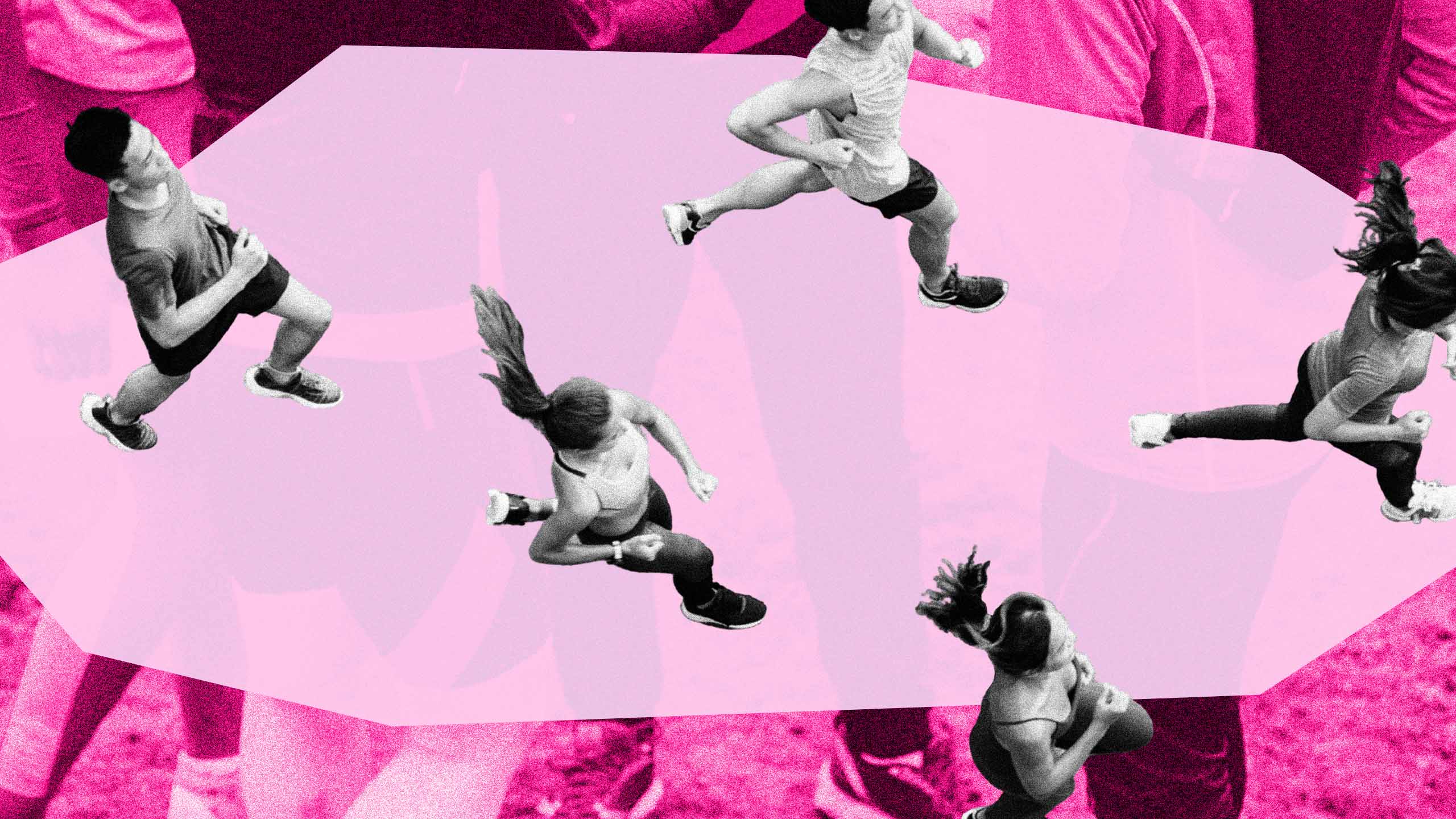

 Why you can trust Xtra
Why you can trust Xtra